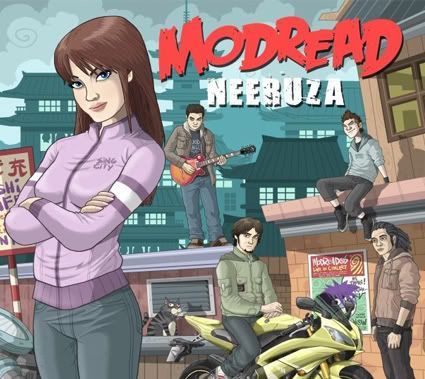
Bacalah testimonial kat bawah ni..
TESTIMONIALS
"Next up, Free Love's M. Jayzuan (AKA Mohd Jayzuan or simply, Jay) with two friends which I figured came from the MMU. One on a beatbox/sampler/synth thing, the other, a girl doing backing vocals. There's no surprises here as it was still a set of cool indie-rock tunes, only it had gone acoustics and minimal.
It was not the usual jovial Jay which we have always seen at the gigs though. The set was governed by sadness and despair, a sure sign of someone addressing the turmoil of heartbreak. Friends around Jay would know that it was no act, the man has been through quite a bit of personal upheavals recently." - Joe Kidd, 7th September 2006 - Ricecooker - on my first solo performance.
"Kehidupan memanglah bosan.. tapi percintaan best" - Azizul Abdul Latif - owner of Pop Malaya.
"Those who know Jay will agree that this dude has more energy than the Energizer bunny. He fronts a popular Malaysian band called Free Love. Always walking around with a 100 gigawatt smile and a big heart, Jay is the poster boy of being happy. So how did he manage to write his sad song? I don't know. I think it has something to do with love, being in and out of it and learning its mechanics again and again." - taken from Junk Magazine - January 2007, issue 4.
"To long-time followers of the local independent/fringe music scene, the name Mohd Jayzuan would definitely ring a bell. One of the most active live performers around, Jayzuan also wears many musical hats and that has made him a veritable fixture among the local musical community." - Adly Syairi Ramly - read the rest of the interview at Malay Mail.
"The meaning of life is all about the stories you tell when you're old." - Arif Reza - a friend and the drummer of The Ha-ha's.
"This is Jay, the infamous Free Love's front man's side project. He mainly plays solo with helps from friends. I stated this side project as 'broken hearted folk rock' before. Well, besides he's a cool lo-fi musician, he's also a good shrink. xTimmyx from Young And Dangerous also has been a good shrink to me. Giving me support during my time of depression. So, basically I'm in the state of 'emo' and enjoying this CD. I personally like the songs 'it's alright baby', 'gone', 'from me to you', and 'when you're around'. Thanks to Jay and xTimmyx for being my unpaid shrink and also others. Heheh…and thanks for these 'folk-patah-hati' songs." - Taken from Nizang's blog.
DISKOGRAFI / DISCOGRAPHY
1. Songs from Bedroom E.P (2006)
2. Love-fi - Debut album (2008)
w/ Free Love
1. Feed Us with Yr Love - Debut Album (2008)
w/ Bloodymary
1. Why Too Care E.P..??!! (2000)
KOMPILASI / COMPILATIONS
1. Junk CD, issue 4, January - Song featured "When You're Around" (2007)
2. Indie for Glory - Song featured "Diamond" (2007)
3. Gegey - Song featured "It's Alright, Baby!" (2007)
w/ Free Love
1. Kopi SeChewen Vol. 3 - Song featured "Indie Rock Darling" (2003)
2. Radio Malaya - Song featured "Hey Ho, I Love You!" (2005)
w/ Bloodymary
1. Kopi SeChewen Vol. 2 - Songs featured "Feeling is Everything" & "An Endless Sense of Soul" (2001)
2. Breaking Ground - Songs featured "Hackers" & "Behind the Tears" (2001)
3. Paradigm of the 5 Kingdoms - Songs featured "Take Me to Her" & "Beautiful Wednesday" (2002)
4. BARA a.k.a Breaking Ground 2 - Songs featured "Desire" & "Letter to Geiko" (2002)
FILEMOGRAFI / FILMOGRAPHY
1. Kami TV Series Episode 1 - Song featured "Gone" (2007)
2. Kami TV Series Episode 4 - Song featured "From Me to You" (2007)
3. Kami TV Series Episode 7 - Song featured "When You're Around" (2007)
w/ Free Love
1. Kami TV Series Episode 6 - Song featured "Indie Rock Darling" (2007)
w/ Bloodymary
1. Kami TV Series Episode 4 - Song featured "Letter to Geiko" (2007)
2. Kami TV Series Episode 7 - Song featured "Beautiful Wednesday" (2007)
BUKU FOTOSTAT / FANZINE
1. Merge (1998)
2. Merge 2 (1999)
3. Himpunan Tulisan Bodoh (2007)
LAKONAN / ACTING
1. Konsekuensi - A short film by Razaisyam Rashid - Featured as the main actor. (2008)
2. Hoppers & Ahli Muzik - Featured as a guest artist in episode 4 & 5 at 8TV. (2008).
**Sumber dari Mohd Jayzuan on Myspace Music
 VS
VS 



